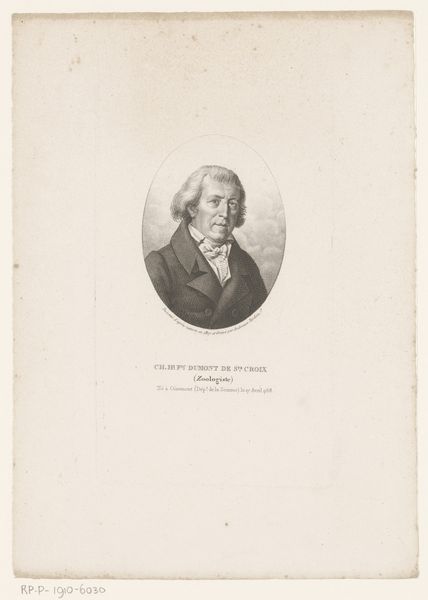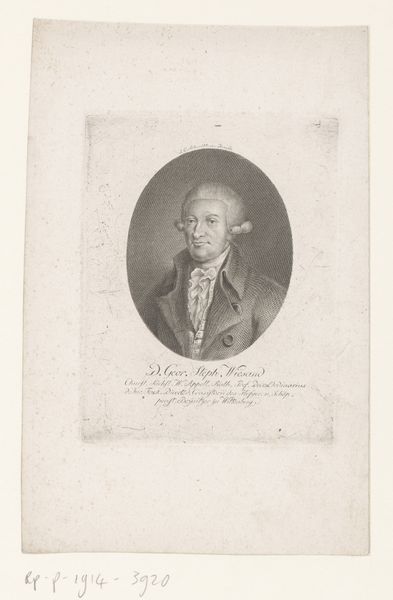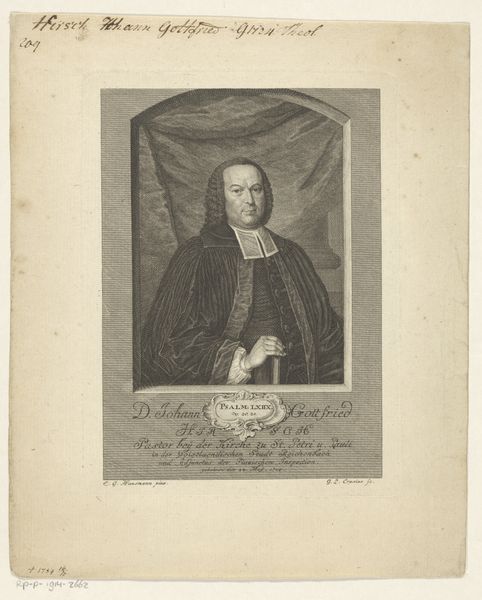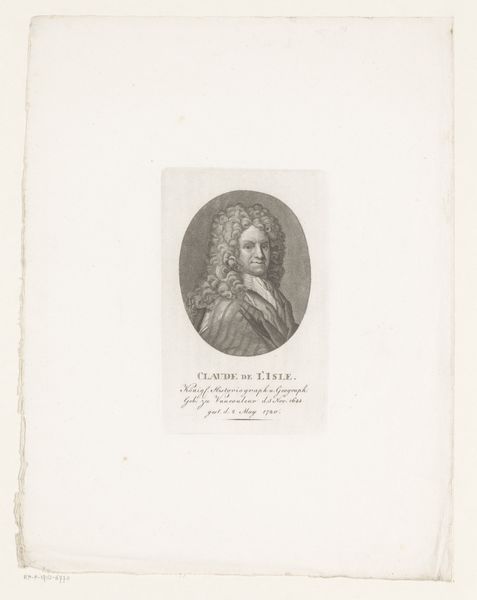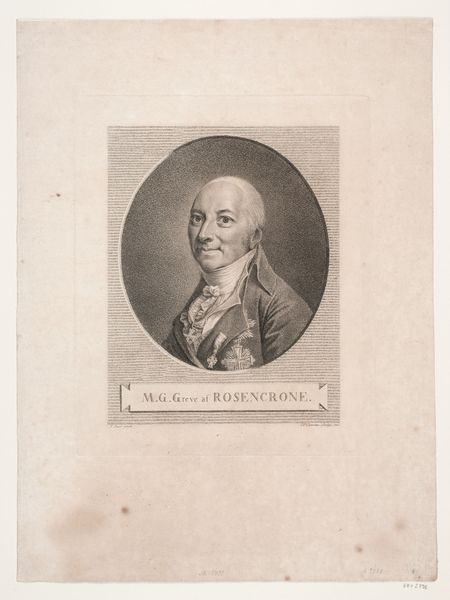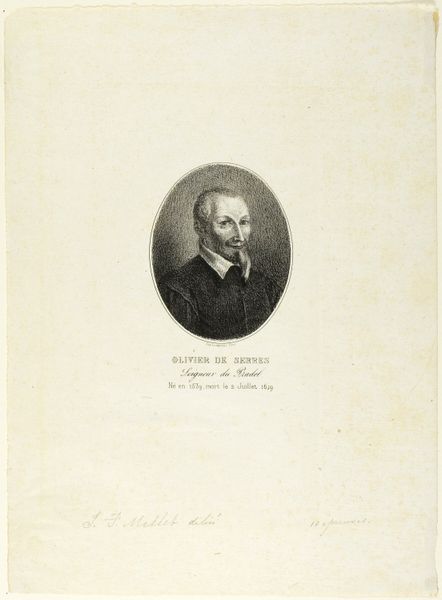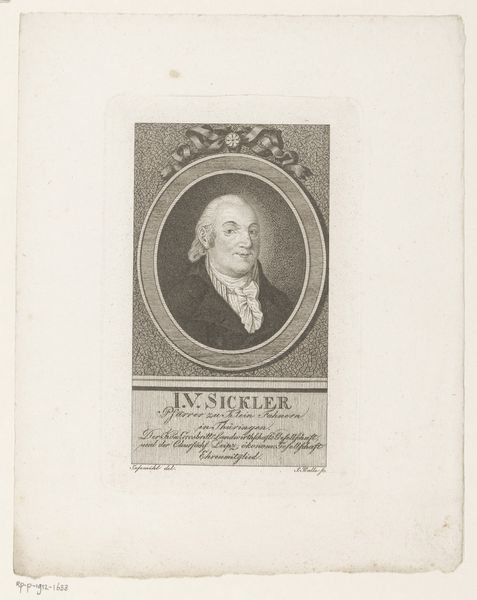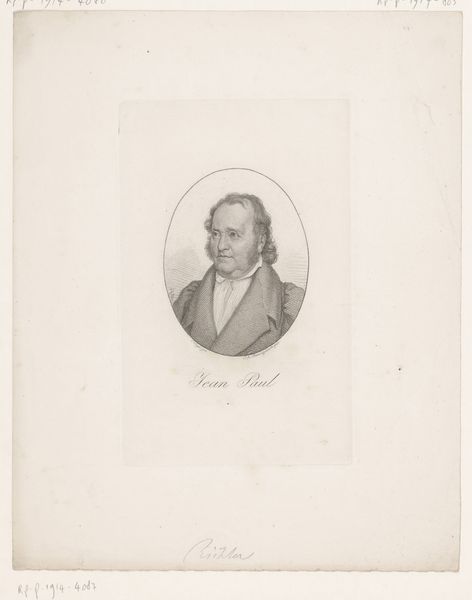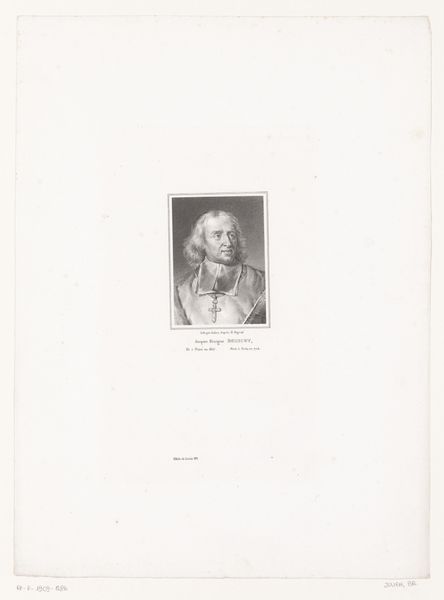
print, engraving
#
portrait
#
neoclacissism
# print
#
history-painting
#
engraving
Dimensions: height 240 mm, width 174 mm
Copyright: Rijks Museum: Open Domain
Curator: This print, crafted sometime between 1782 and 1814, is entitled *Portret van Guillaume-Marie-Anne Brune*. It presents a distinguished gentleman. Editor: My initial reaction is of austere formality. The monochrome engraving focuses solely on the subject, set against a neutral backdrop. The circular vignette creates an insular, almost confrontational feel. Curator: It depicts Guillaume-Marie-Anne Brune, a Marshal of France during the Napoleonic era. His imposing gaze and the detail afforded to his elaborate military attire speak volumes. Editor: Exactly! Look closely at the layering of the textures. The soft curls of his hair, the stiff formality of his high collar, the dazzling decoration of his uniform. It’s a powerful statement, not just about individual identity, but about societal rank and martial achievement, each painstakingly delineated through the contrast between light and shadow. Curator: His role as Marshal is intrinsically linked to the history of the period, mirroring the ambitions and turbulent changes sweeping Europe under Napoleon's reign. To understand Brune's image is to understand the period in general. The production of this print surely coincided with some milestone in Brune's public career. Editor: A telling demonstration of neoclassicism at the service of propaganda. Consider how the circular frame evokes the look of a Roman cameo, a strategy to imbue its sitter with classic virtues, stability, and permanence. This print isn't simply documentation; it's calculated image-making that places its subject within a grand, self-consciously historical narrative. Curator: It underscores the deliberate public role of art. In short, such images were important political tools for consolidating power and shaping perceptions of leadership. Editor: And by analyzing such works, we gain key insights into the dynamics of representation, power, and cultural memory. The art, its intent and impact – it’s a powerful combination. Curator: Indeed, it presents us with another layer of engagement with art from that period, allowing us to understand it and see history from new perspectives.
Comments
No comments
Be the first to comment and join the conversation on the ultimate creative platform.

